Research Project Plan Elements
1. Collaboration with Curriculum
For this research project, we learned how to research and promote a large-scale non-profit organization. The first step was to collect a large amount of data. Then we organized and kept the most relevant and useful data, and also made plans for interviews and in-class promotions. We tried to apply the knowledge and skills we had learned from school, and made an effort to record everything in text. Beside our wilderness discovery, we also sharpened our language skills including listening, speaking, reading and writing. In the field of social studies, we followed SOW volunteers’ footprints and learned to “just do it”! In every activity, our teammates could see how we combined each other’s contribution to achieve greater synergy.

Source: Wilderness Crossing

Source: Wilderness Crossing
Furthermore, in the fields of art and humanities, we hoped to take a more creative and artistic and less serious approach toward the topic of the research project and environmental issues. As a result of our brainstorming session, we designed a team flag with cartoon patterns to attract attention. In addition, we utilized our artistic sense to hand draw the team emblem and illustrations of our wilderness wild names. We then conducted in-school promotion with a photography exhibition, allowing everyone to see the beauty and sorrow of mother nature. Through practical actions and CyberFair platform, we hope to promote the Society of Wilderness’s core value and belief in protecting the forests, rivers, oceans and lands.

Source: Wilderness Crossing
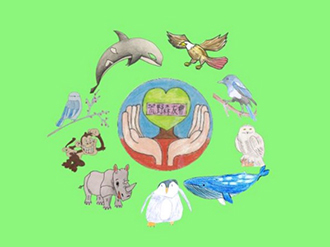
Source: Wilderness Crossing
2. Use of Information technology
| Computer Related Software | |
| Line、Instagram | Social media, announcement platform |
| Windows 10 、 Google Chrome | For searching and collection relevant data, media, self-learning topic for the research project |
| Microsoft Word 2016 | Organization and summary of writings in text, including thoughts and reflections |
| Microsoft Excel 2016 | Design statistical charts for questionnaires |
| Microsoft PowerPoint 2016 | For making presentation slides |
| FastStone Capture | For taking screenshots |
| nEO iMAGING | Photo and Video Editing |
| Photoimpact X3 | Photo and Video Editing |
| Adobe Dreamweaver | Website construction |
| iMovie、PowerDirector | Video Editing & Creation |
| Google Docs Forms | Digitalize questionnaires |
| Computer Related Hardware | |
| Computer | Digitalize research project and reports |
| Laser Printer | Print out relevant project data |
| Digital Cinema Camera | Recording of research project process |
| Digital Camera | Recording of research project process |
| Smart Phone | Recording of interviews |
| Digital Recording Pen | Voice recording of interviews |
3. Influence & Impact
Through this research project, we were able to learn more about the land we grew up on. We started with very limited knowledge of environmental issues, but after we met SOW and participated in many activities such as visiting wetland, witnessing birds’ migration, and beach and mountain cleanups, we had discovered that even as students, we could actually make more contributions than we previously expected. Environmental protection is not just a slogan, it is closely related to us and can be executed in our daily life. For over 25 years, SOW’s determination and perseverance to protect the natural environment have touched our hearts. We also hope to accompany SOW on the road of environmental protection.
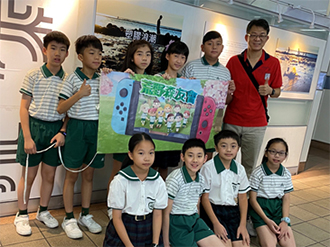
Source: Wilderness Crossing
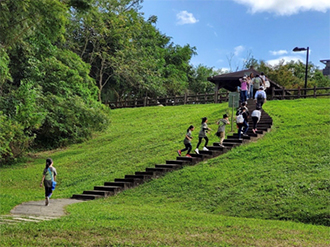
Source: Wilderness Crossing
In this CyberFair research project competition, Wilderness Crossing had worked as a team to brainstorm creative ideas to introduce the Society of Wilderness to more people. Step by step, we used picture books and photographs of nature to awaken everyone’s inner appreciation and love for the natural environment. This also allows people to gain awareness of the environmental impact caused by human beings, and that such harmful impacts will eventually come back to humans through contaminated food chains and greenhouse effects. We made an effort to promote the adaptation of environmental protection actions in our daily lives, such as using reusable bags and water bottles, recycling, etc. One by one, every little drop of contribution will become a significant force with influential power, we believe we can all realize the true spirit of the wilderness!

Source: Wilderness Crossing
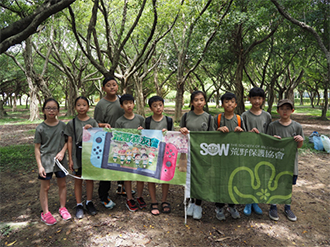
Source: Wilderness Crossing
4. Intellectual Property Rights
In the research project process, we interviewed SOW’s founder – Dr. Lee, Wei-Wen SOW Shuanglianpi Environmental Education Director – Huang, Chen-Fu National Taiwan Ocean University Assistant Professor – Yen, Chia-Dai and SOW Head of Parent-Child Group – Lu, Tao-Cheng. After we received consent from the interviewees, we converted the conversation content and photographs into the required format to complete the project webpage. The website contains sizable amounts of texts, pictures, and videos, which are derived from the team’s collaboration efforts, such as reading through relevant data, interviewing with key personnel, on-site visit, recording and discussions. In regard to reference and citation, we will clearly state the source to respect the intellectual property rights. These valuable information have provided substantial content to our project and website, something we will forever cherish and appreciate. We would like to express our sincere appreciation and gratitude to those who had granted us the consent to use the materials we had obtained.
 |
 |
||
 |
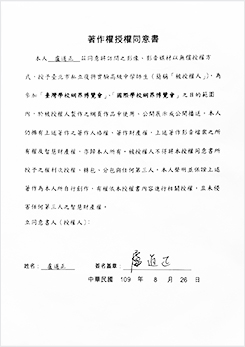 |
5. Local Support
Dr. Lee, Wei-Wen is the founder of the Society of Wilderness. He has many identities including dentist, children education, environmental volunteer, and television host, etc. Joined by local environmental photographer – Mr. Xu, Ren-Xiu, the Society of Wilderness was founded in Dr. Lee’s clinic. With a passion for Taiwan, SOW is committed to protecting the natural and ecological environment. They call on many enthusiastic professional and proactive volunteers to join SOW. These people are able to work collaboratively, communicate with each other, and grow together, forming a strong public force that protects the natural and ecological environment in Taiwan. In recent years, SOW has taken several steps forward and started to collaborate with government policies to carry out plans in regard to Taiwan’s ecological environment.
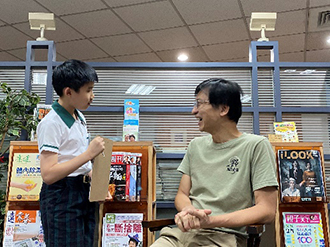
Source: Wilderness Crossing

Source: Wilderness Crossing
Mr. Lu, Tao-Cheng is the leader of SOW’s parent-child group and has been involved in SOW for nearly 10 years. He is also known for his wild name - Smallflower Beggarticks. Mr. Lu is the father of two children, and he hopes his children can have more opportunity to get in touch with nature. He used to be the tour guide at Fuyang Eco Park and Garden City, he is one of most experienced tour guides in SOW. As Mr. Lu has been involved with SOW’s parent-child group, he has the opportunity to watch many children grow into adults and become friends with them. His very first parent-child group participants are now in colleges. He is regarded as the most trust worthy and friendly leader. He loves to spend time with the group’s participants, sharing his experience, providing guidance to them. Mr. Lu enjoys learning and growing up with the children to carry out environmental works.
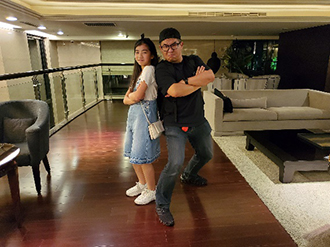
Source: Wilderness Crossing
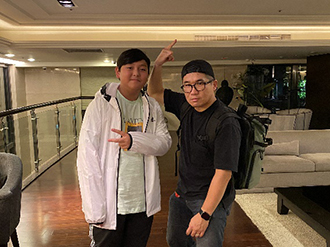
Source: Wilderness Crossing
Mr. Yen, Chia-Dai is the assistant professor at National Taiwan Ocean University (NTOU) and a volunteer at the Taiwan Marine Education Center. NTOU is Taiwan’s top-tier institution that offers the most comprehensive Maritime and Aquatic education. Professor Yen is specialized in marine education. Taiwan is surrounded by the ocean, marine education should begin with three key elements – “Get close to the Ocean, Loving the Ocean, Knowing the Ocean”, and enhance marine education literacy. With participation in beach cleanup activities, we can learn the correct concepts and enrich our knowledge. Through in-person interaction with the ocean environment, we are able to know the current marine environment condition and issues, then we can further develop deeper emotional connections to the ocean. With his marine education expertise, Professor Yen is our best consulting channel in our research project process.

Source: Wilderness Crossing

Source: Wilderness Crossing
Mr. Huang, Chen-Fu is the director of SOW’s Shuanglianpi ecological education base. According to him, as Shuanglianpi was privately owned, previous owners only saw the benefit from property development but neglected the environmental impact. In order to protect the habitat environment, on the one hand, SOW has been promoting environment-friendly farming. On the other hand, it collaborates with different social groups to promote environmental education and outdoor experience activities. It also provides training courses to guides and promotional speakers. With proper training, these people can take environmental education into the schools. They can also assist the school in ecological habitat planning. Mr. Huang leads a group of volunteers, they are the frontline staff in the environment-friendly farming project and the restoration of native species and habitats. They play a very important role in wetland restoration in Taiwan.
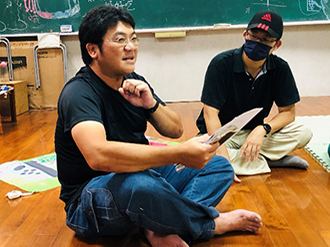
Source: Wilderness Crossing
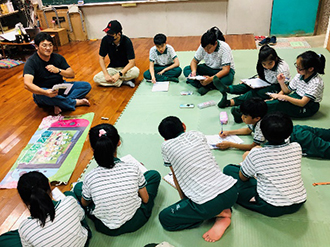
Source: Wilderness Crossing
6. The Ambassador Role
The Society of Wilderness is an environmental protection and public interest group established in 1995 by a local citizen of Taiwan. It starts with a mission to take care of Taiwan with an eye on the whole world, dedicating its effort to promoting public participation in protecting Taiwan’s natural and ecological environment through environmental education and habitat preservation works.
Over the years, SOW has been supported and blessed by many people’s passion, goodwill, and willingness. Its value has established a connection between people from different fields with passion in environmental protection. Through education, SOW hopes it can completely change a person’s perspective, something it refers to as “gentle revolution”. Together with participation in environmental issues, habitat preservation, community and volunteer promotion, SOW believes people can make selfless and extraordinary contributions to Taiwan’s natural environment. There are more and more people starting to recognize SOW’s value, many who share the same ideal and value have joined to become volunteers. With the number of volunteers continuing to increase, SOW is actively taking necessary steps to become more professional, integrated with the community, and globalized. It has a vision to create a vibrant natural environment for us and future generations.

Source: Wilderness Crossing
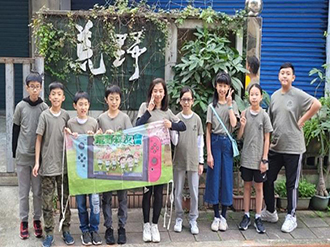
Source: Wilderness Crossing
7. Contribution to Local Community
The Society of Wilderness (SOW)’s main purpose is to promote diversified environmental protection methods in Taiwan. Starting from caring for Taiwan, SOW applies the “gentle and firm” and “communication over confrontation: approach to remain involved in environmental issues. It makes effort to lead more people to take initiatives in habitat works, environmental protection, species conservation, and environmental education. SOW’s mission is to dedicate its effort to the sustainable development of environmental protection in Taiwan and the world.

Source: Wilderness Crossing
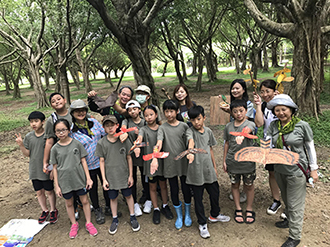
Source: Wilderness Crossing
SOW believes that the best teaching method is to take people into the wilderness to establish a more emotional connection with nature. With 25 years of dedication and hard work, SOW has established committees with a system to provide training courses for volunteers who share the same vision and value. Using methods such as interaction, practical experience, and sharing, combined records and observations of habitat ecology, we can have a better understanding of the natural environment and will be able to identify and solve the problems. SOW provides the general public an opportunity to receive environmental education. Furthermore, it has established parent-child groups and hosted many promotion seminars in different schools, hoping to provide environmental education and introduce the beautiful nature to children as early as possible. SOW also hopes that children can learn more about the natural habitat and respect all living species in the ecosystem, then take a step further to cherish natural resources and protect the planet together.
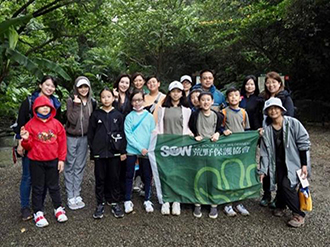
Source: Wilderness Crossing

Source: Wilderness Crossing
In an era with rapid technological changes and demand for fast and high quality results, SOW has established itself as a non-profit public organization that is dedicated to the conservation and preservation of Taiwan’s natural habitat environment. From north to south, west to east, mountain to plain, and city to countryside, SOW has collaborated with volunteers to turn a small environmental group into an organization with scale and recognition. The organization continues to contribute its effort and take actions to educate people to cherish the natural resources and raise environmental awareness. SOW takes the initiative to take actions, hoping that more planet’s citizens will step up to protect the precious natural environment together. Let us follow SOW’s footsteps to protect the blue sky and green fields to create a sustainable natural environment.
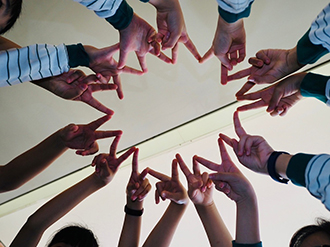
Source: Wilderness Crossing

Source: Wilderness Crossing
8. Discovering Lesson and Surprises
Wilderness Crossing comprises 5th and 6th graders. We voted to agree on selecting the “Society of Wilderness” as our topic for the research project. Although we have had some basic understanding of ecosystems and environmental protection, many questions still arose during our research and data collection. For example, how do humans and the natural environment affect each other? What are the problems? From identifying problems, collecting data, discovering wilderness, participating in volunteer guided tours, interviewing professionals, promoting in school, and hosting a photography exhibition, we had a very different learning experience than the typical in-class lecture where you sit quietly and listen to the teachers. In terms of teamwork, we must brainstorm and hold team discussion together, and we have learned to listen to different ideas and how to coordinate and collaborate in the process. We would encounter challenges in the process, but we definitely enjoyed the sense of accomplishment when we overcome the obstacles.
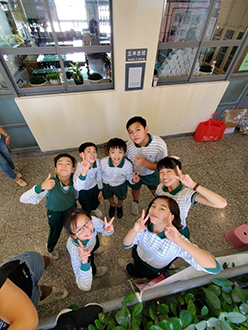 |
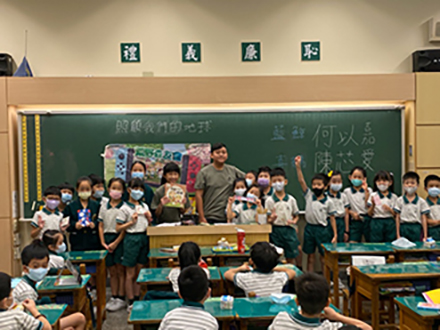 |
|
| Source: Wilderness Crossing | Source: Wilderness Crossing |
We remember that our very first participation in SOW activity was the Wugu Wetland Seminar on July 9, 2020. We were surprised by the strong turnout when we entered the classroom. The participants include parents and students from all ages. We realized that there are many people who have passion for nature and care about environmental issues. We also cannot forget the exciting feelings when we saw thousands of swallows flying in the sky at the Wugu Wetland. We guess that these swallows love the land as much as we do!
In this research project, the Wilderness Crossing had participated in the following activities: Wugu Wetland Seminar, Wugu Wetland Tour, XinXian Trail Tour, Shuanlianpi Wetland - SOW Yilan Branch Interview, Zhuan River Outlet Beach Cleanup, Daan Forest Park Tour, Fuyang Eco Park Tour, Dagouxi Waterfront Park, LiYu Mountain Trail Cleanup, and Photography Exhibition – Plastic Waves. We also conducted interviews with professionals including SOW Founder – Mr. Lee, Wei-wen , Director of Shuanlianpi Eco Classroom – Mr. Huang, Chen-Fu Volunteer – Mr. Lu, Tao-Cheng, National Taiwan Ocean University Professor – Yen, Chia-Dai.
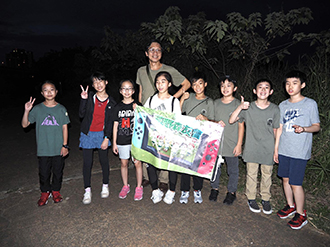
Source: Wilderness Crossing
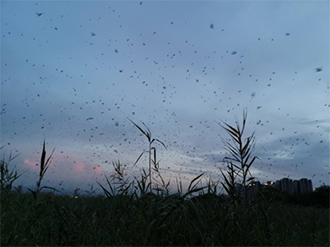
Source: Wilderness Crossing
The Wilderness Crossing brought its SOW experience and reflections back to the school. We made a story book presentation with a prize quiz in lower grade classes. For higher grades, we promoted our learning with environmental education and questionnaires. For the photography exhibition, each team member picked out his or her favorite picture that was taken from our participation in various activities. The pictures were showcased in the school’s public area. In addition, we also made a “Wilderness Tree of Love” and handed out leaves for feedback to every class during breaks. The degree of feedback was phenomenal. The Wilderness Crossing left the classroom and had in-person contact with the outdoor environment and lessons taught by nature. It turns out that besides school, natural ecological environments such as mountains, rivers, forests, insects and plants can enrich our perspectives and spark more curiosity from us, and let us take a more proactive approach to explore. There is knowledge that can be found everywhere in life!
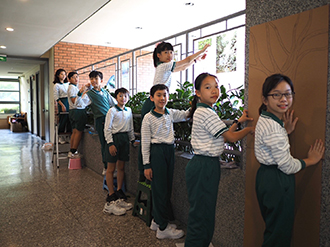
Source: Wilderness Crossing
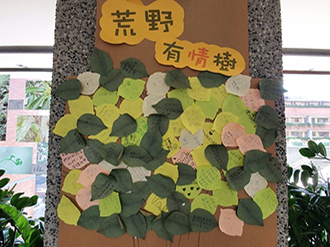
Source: Wilderness Crossing



